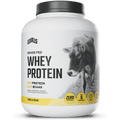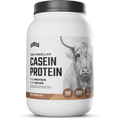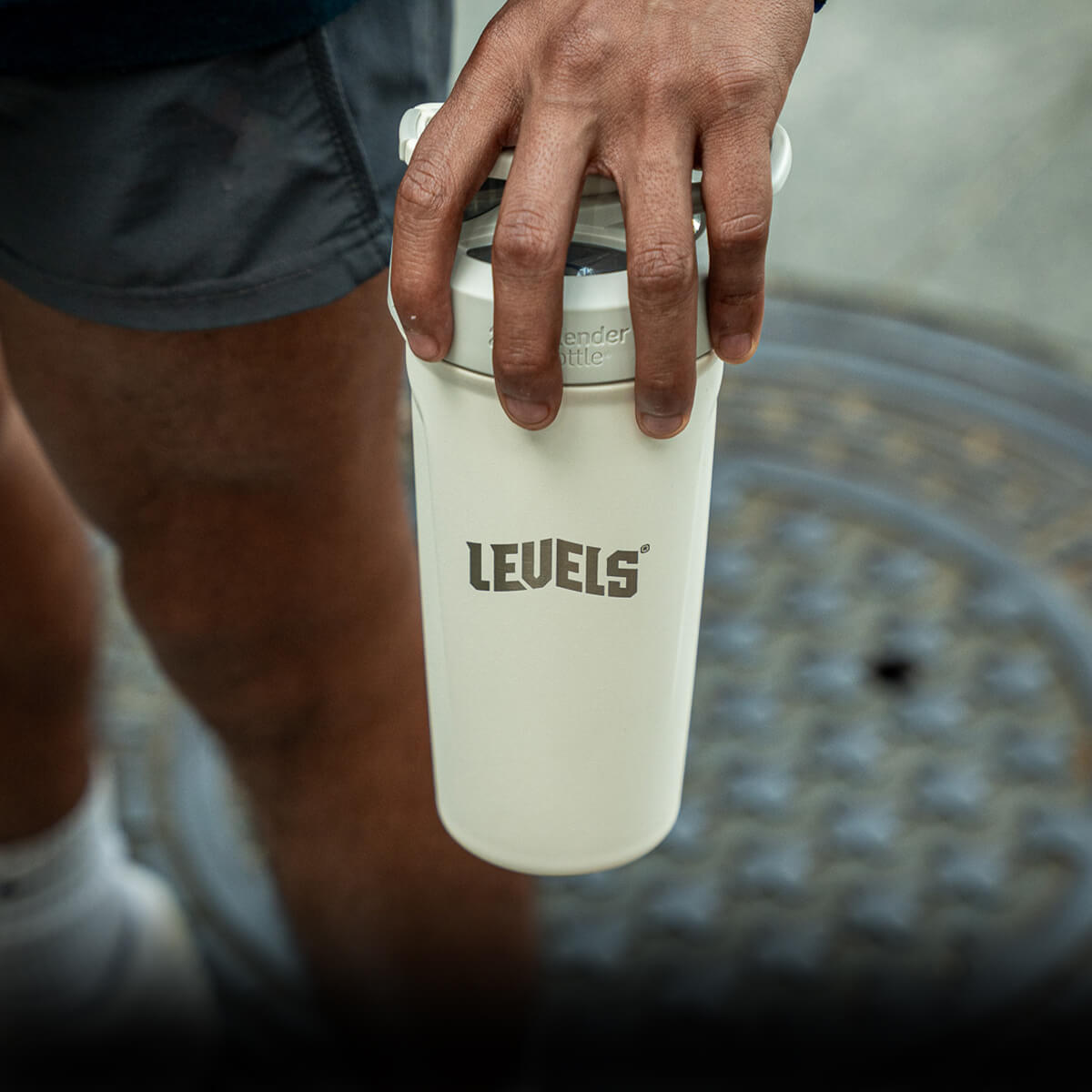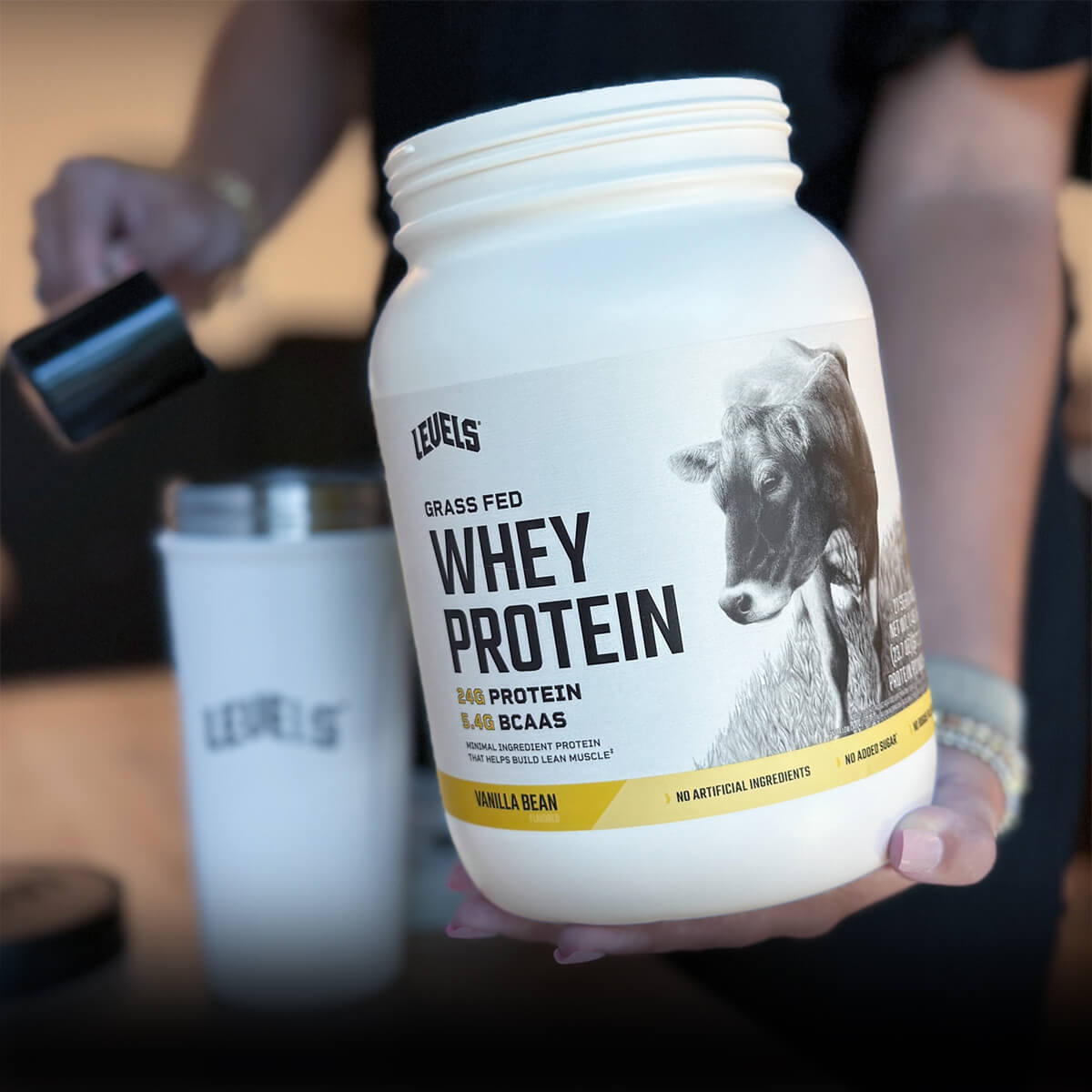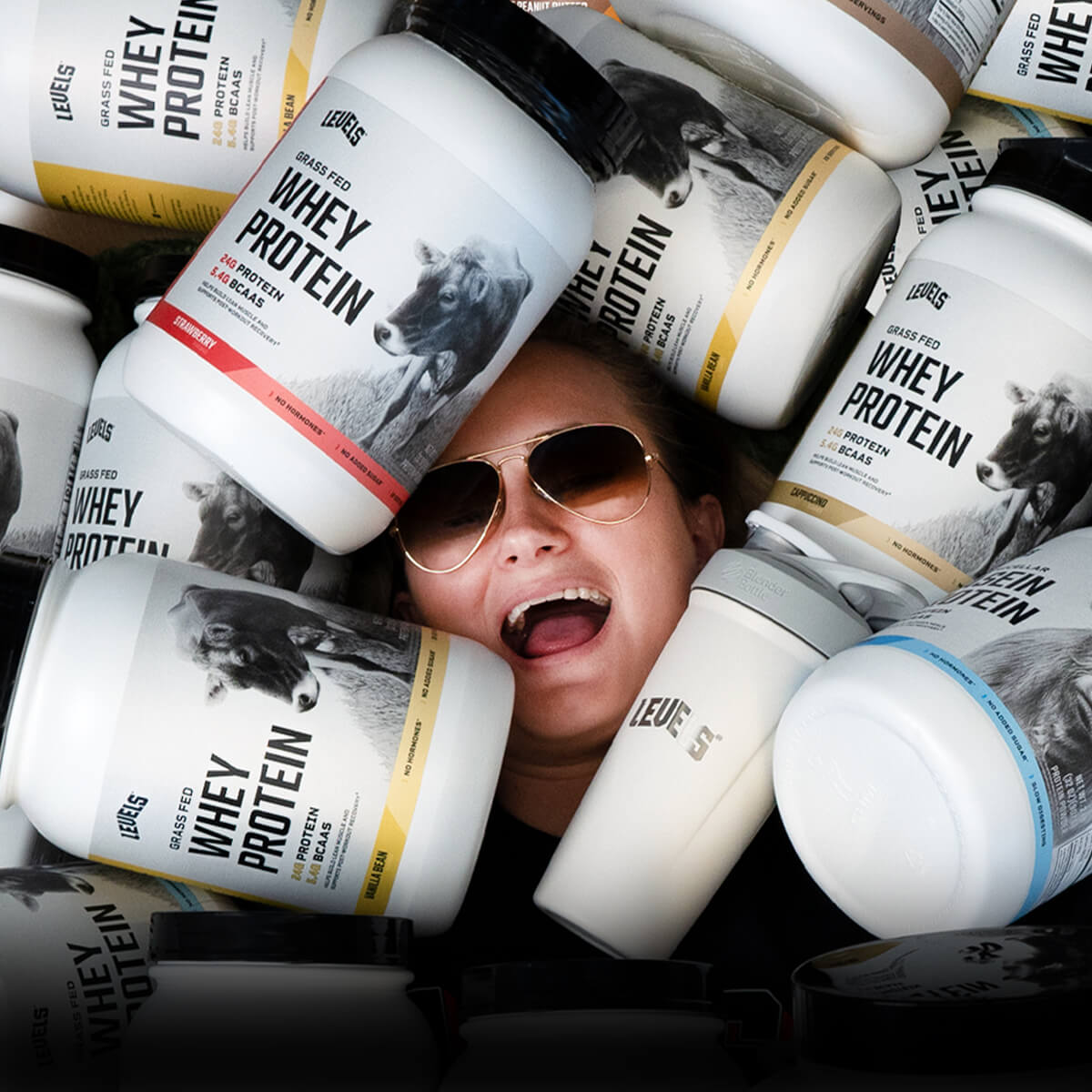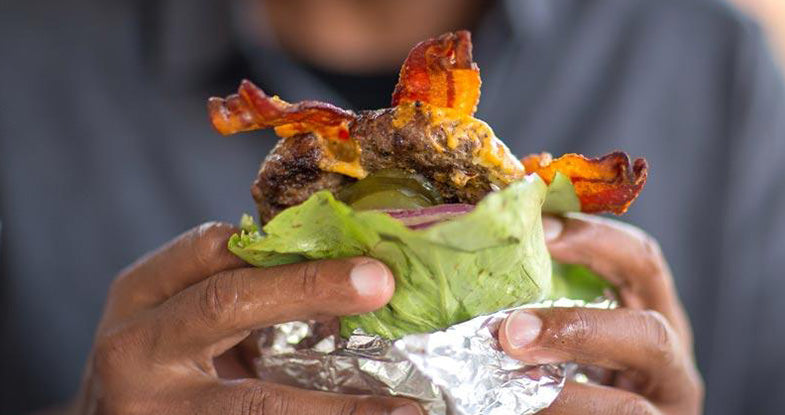Mesomorphs are people with low body-fat, V-shaped torsos, and large yet dense muscles.
The term mesomorph comes from the concept of somatotypes, a physical classification system from the 1940s.
Although somatotypes don’t hold up 100% scientifically-speaking, they are still a useful way to describe different types of physiques today.
In this article, we’ll explore the value of somatotypes, the proper diet and training for mesomorphs, plus how to eat and lift so your body becomes more mesomorphic — even if you’re not one naturally.
What Are Somatotypes (Body Types)?
In the 1940s, an American psychologist named William Herbert Sheldon invented a new theory for classifying people based on their body type.
He called his system “constitutional psychology,” and he used it not only to describe the appearance of different physiques, but also temperament and other personality traits.
Back then, constitutional psychology achieved widespread popularity, and some researchers even believed it could predict a person’s intelligence, morality, and life success.
Although today’s psychologists and sociologists reject constitutional psychology, exercise science researchers still use Sheldon’s physical classifications, called somatotypes, as a convenient method to describe physical appearance[*].
Somatotype vs. Phenotype
The word somatotype, coined by William Sheldon, literally means “physical type.”
Somatotypes fall under the broader scientific concept of phenotype, which means “the observable physical characteristics of an organism.”
Because somatotypes are based on observation, they aren’t set in stone, nor are they entirely genetic.
Therefore, while you might tend towards a particular somatotype, factors like gaining or losing weight, falling ill, aging, or purposely transforming your physique can change your classification.
Keep reading to learn the 3 primary somatotypes, as well as which one best describes your body!
Are You a Mesomorph, Ectomorph, or Endomorph?
Your somatotype mostly describes your appearance. However, each somatotype also has certain associated traits that relate to qualities like metabolism and fitness.
Mesomorphs are muscular, with broad shoulders, relatively narrow waists, and hard, lean physiques.
Secondary traits of mesomorphs may include high levels of strength and power, an easy time gaining muscle mass, and relatively little difficulty with staying lean.
Ectomorphs are thin and lean, typically lack broad shoulders, and are often tall.
Secondary traits typically found in ectomorphs are low levels of strength, difficulty adding muscle, an easy time avoiding fat gain, and above-average aerobic fitness abilities.
Endomorphs, the third somatotype, are pear-shaped, soft, possess relatively high levels of body-fat, and may be shorter than average.
The secondary traits of endomorphs can include trouble with unwanted fat gain, difficulty shedding fat, and average or below-average fitness levels.
Hybrid Somatotypes
The major somatotypes don’t describe everyone perfectly. Some people possess a blend of physical, metabolic, and fitness traits that don’t fit into just one box.
For example, you might be muscular with extra body-fat (an endo-mesomorph).
Or you might be relatively thin with broad shoulders (an ecto-mesomorph).
Alternatively, a person who has low muscle mass, average or below-average body weight, and a pear shape would be an ecto-endomorph.
And regardless of your appearance, your fitness levels and training history also influence your physical traits. For example, you could be a muscular, marathon-running mesomorph, or an explosive, strong ectomorph.
Somatotypes and Diet
Before we take a deep dive into the mesomorph diet, here’s what you need to know about the other somatotypes and their optimal dietary patterns.
Because each somatotype has particular tendencies, some eating styles suit certain somatotypes better than others.
Ectomorphs and ecto-mesomorphs can benefit from:
- Plenty of calories to match their faster metabolism, especially for weight gain purposes
- Higher carb intake (40-60% of calories from carbs) since they are usually resistant to fat gain
- Plenty of protein to support muscle-building efforts, especially on lifting days
Whereas endomorphs, endo-mesomorphs, and ecto-endomorphs should consider:
- Managing calories carefully to prevent unwanted weight gain
- Low-carb or ketogenic diets to shed fat or avoid fat gain
- 25-30% or more of calories from protein to reduce body fat and control appetite
But remember: at best, your somatotype is a starting point for understanding what works for your body.
Everyone is different, and the best way to learn what works is through experimentation, documenting your results, and trial and error.
What Is the Mesomorph Diet?

First of all, there’s not some official “mesomorph diet” that all mesomorphs eat.
The entire concept of somatotypes and mesomorphs is that some people are naturally lean, V-shaped, and muscular.
Therefore, true mesomorphs have an advantage over everyone else as far as looking fit.
And they’re the people who have an outstanding appearance but may not know a whole lot about nutrition.
However, the ability to get ripped with minimal effort can be a double-edged sword: being a mesomorph doesn’t ensure you’re immune to fat gain or other consequences of an unwise diet in the future.
Are you one of the rare people with a naturally mesomorphic physique? Here’s what you need to keep in mind:
- Your body is less sensitive to dietary mistakes than other people’s, but over time, poor decisions will still catch up to you — with adverse effects on your health and appearance.
- Calories and macros aren’t a massive concern for you, but do ensure you eat healthy whole foods whenever possible (organic and local if you can afford to do so).
- Focusing on your natural strengths may be tempting, but you’ll get better fitness results by addressing your weaknesses, too.
- As you age, be honest with yourself about your body composition, because everyone is increasingly prone to losing muscle and gaining fat as the decades pass.
- Adding intermittent fasting to your regimen now can help keep you lean and healthy for life.
But in reality, the vast majority of people aren’t natural mesomorphs.
The good news, though, is that your somatotype and phenotype can shift over time if you’re consistent and work hard.
In the next section, you’ll begin learning how you can become leaner, more muscular, and mesomorphic.
Calorie Intake and Meal Frequency
Mesomorphs are lean and muscular. But most non-mesomorphs could be leaner, more muscular, or both.
If you aren’t already lean, beginning by shedding unwanted fat is more efficient than gaining size. That way, you won’t lose hard-earned muscle mass as you drop weight.
Additionally, some research also suggests you’re less likely to add fat if you bulk up from a lean foundation[*].
Either way, counting calories is a surefire way to get the results you want. Use the following calculation as a starting point to lose any unwanted fat:
Average daily calories (kcal) = Body weight (in pounds) * 10 to 12
In other words, for a 200-pound individual, 2000-2400 calories per day on average will probably be effective for fat loss.
And people with higher activity levels or ectomorphic physiques can start at the high end of the range, while less-active people or those with endomorphic bodies should start at the low end.
Use a calorie counting app (or go old-school with pen and paper) until you make a habit out of eating the target calories each day. And adjust your calories up or down each week if you aren’t getting the results you desire.
Conversely, the following formula is for people who are already lean and ready to add muscle:
Average daily calories (kcal) = Body weight (in pounds) * 15 to 20
If you consider yourself naturally endomorphic, start at the lower end of the calorie scale, and vice versa if you’re more ectomorphic.
Finally, your meal frequency isn’t an essential consideration in the same way as calorie intake.
Daily fasting or one meal a day (OMAD) may have health benefits, but it’s probably not the ideal approach to remodeling your body long-term.
Instead, try starting with about 3 meals per day, plus a post-workout protein shake on days you train.
Or if you wish to include fasting, you can fast then eat 1-2 meals on non-lifting days, but on days you lift weights, eat 3-4 meals and skip fasting.
While there may be some benefits to more-frequent protein intake, research is conflicting[*][*].
Currently, there’s no good scientific reason to think 6-8 meals per day has any significant advantage over a lower meal frequency (sorry, 1990s bro-science).
For tons more info on the best bulking practices, don’t miss Clean Bulking: 13 Diet and Training Tips to Gain Muscle, Not Fat.
Macro Breakdown
Your calories determine whether you gain or lose weight, but your macronutrient ratios play a big role in the quality of weight gain or loss.
Put differently, eating the wrong macros can result in gaining fat or losing muscle, neither of which will make you a mesomorph.
And as with the previous advice on calorie intake, you’ll want to fine-tune your macros to your immediate needs — based on your short-term goal to either lose fat or add muscle mass.
But regardless of whether you’re in a fat loss or mass gain phase, getting 25-30% or more of your calories from protein is wise. It’s among the best ways to ensure you gain muscle and limit fat gain[*][*].
For instance, if you’re eating 2400 calories per day, at least 600-720 calories per day should be from protein, which equates to 150-180g of protein.
Also, some scientific evidence suggests that a higher protein intake of up to 1.6 grams per pound of body weight per day has added benefits for gaining muscle mass[*].
Interested in the science behind your daily protein intake? Check out Protein Absorption: Everything You Need to Know.
Do you currently have extra fat to melt off before you add mass? Consider the following macro options:
- Low-carb (100g or less carbs per day, 25-30% of calories from protein, the rest from healthy fats)
- Ketogenic (25-30g or less of carbs per day, 25-30% of calories from protein, the remainder from healthy fats)
- Zone diet (40% carbs, 30% protein, 30% fat) or an even macro split (33%, 33%, 33%)
On the other hand, if you’re lean and ready to bulk up, low-carb or keto isn’t your best bet. Instead, choose from these ratios:
- Zone diet (40% carbs, 30% protein, 30% fat) or an even macro split (33%, 33%, 33%)
- High-carb, high-protein (45-55% carbs, 25-30% protein, 15-30% fat)
- Carb cycling (alternate between eating more carbs on training days, especially pre-workout, with fewer or no carbs on days you don’t lift)
And similar to your calories, you’ll also need to make a habit of eating the appropriate macro breakdown for your goals.
Start by using an app or food diary for a few weeks. Then, you’ll have the necessary knowledge to be consistent on your own.
And if you opt for the keto diet, test your ketone levels regularly using keto test strips or another method. Otherwise, you can’t know for sure that you’re actually in ketosis.

Food Selection
Food selection matters a lot for your long-term health, but in the short term, it’s not an essential factor in your physique results.
The best choice for your health and wellness is to eat fresh, whole foods. You can buy them from the grocery store, farmer’s market, an online meal prep service, or a reputable “clean eating” restaurant.
And remember to eat plenty of fruits, vegetables, and whole food sources of fiber, too.
In contrast, however, some ectomorphs opt to eat more processed foods to bulk up. Although such an approach has some potential health trade-offs, it’s not ineffective.
For a more thorough discussion of food selection and different approaches to bulking, head over to Clean Bulk vs. Dirty Bulk: Pros and Cons (Plus How to Choose).
Supplements
Supplements are not the main ingredient for becoming a mesomorph. And plenty of them don’t live up to their own advertising hype, either.
However, some supplements are supported by solid research. Stick with this list so you don’t waste your money:
- Grass-fed whey protein for post-workout shakes or meal replacement purposes
- Collagen protein for healthy joints
- Casein protein (read Casein vs. Whey: The Similarities and Differences Explained)
- Creatine monohydrate (see How & When to Take Creatine Plus 4 Reasons to Take It)
- MCT oil
Overall, though, supplements are only as effective as your diet and training program. Keep reading to learn how to solve the rest of the puzzle.
Mesomorph Training Program

Unfortunately, there’s not a secret mesomorph training program that works perfectly for everyone.
As with diet, there are two different training routes to becoming a mesomorph:
- A rare natural gift for being big and ripped, in which case most training programs will work
- Otherwise, working hard, smart, and consistently, and learning from your personal experience
And asking mesomorphs at the gym for exercise tips isn’t always enlightening, either. It’s kind of like asking someone who inherited lots of money for investment advice — their info could be excellent, or it could be disastrous.
Luckily, we’ve got you covered with training advice derived from research and hard-won experience.
Assuming you’ve got your diet dialed in, lifting weights correctly is the main variable in achieving thick, dense muscles.
You’ll need to consider three things:
- When to use high reps vs. low reps (read High Reps Vs. Low Reps? What Science Says About Rep Ranges).
- The best methods and exercises to train each muscle group (see The Ultimate Muscle Groups Guide & How To Best Train Them).
- How Many Exercises Per Muscle Group? The Definitive Guide for additional helpful insights on volume and muscle groups.
And you can find some helpful weight training tips in Clean Bulking: 13 Diet and Training Tips to Gain Muscle, Not Fat, too.
Choose Your Cardio
The type of cardio you perform is much less important than the way you lift weights. Although you should do some kind of cardio each week, there’s room for personal preference in your decision.
Perform aerobic exercise, low-intensity interval training (LIIT), high-intensity interval training (HIIT), metabolic conditioning (such as CrossFit), or a blend.
And walking is effective (and fantastic for your health), too.
At Levels, we’ve found that performing 5 hours of total weekly activity is a great way to stay lean, fit, and healthy. So figure out how much time you’re spending lifting, then add enough cardio of your choice to make up the difference.
And if you have a manual labor job or you’re physically active outside of exercise for any reason, you can count that time towards your 5 weekly hours, too.
The Takeaway
Remember, your somatotype isn’t your destiny. Ectomorph, endomorph, and mesomorph are only convenient terms to describe the way your body looks right now.
But unless you’re a true natural mesomorph, achieving that coveted, ripped, V-shaped physique can take years of hard work.
First, you’ll need to start by getting lean. Otherwise, if you carry extra fat, you’ll just gain more fat as you bulk up.
And the second step is to put in time in the weight room as you eat a caloric surplus, getting stronger while focusing on your weaknesses and lagging muscle groups.
Proven supplements like whey protein, creatine, and MCT oil can help, but there are no shortcuts.
